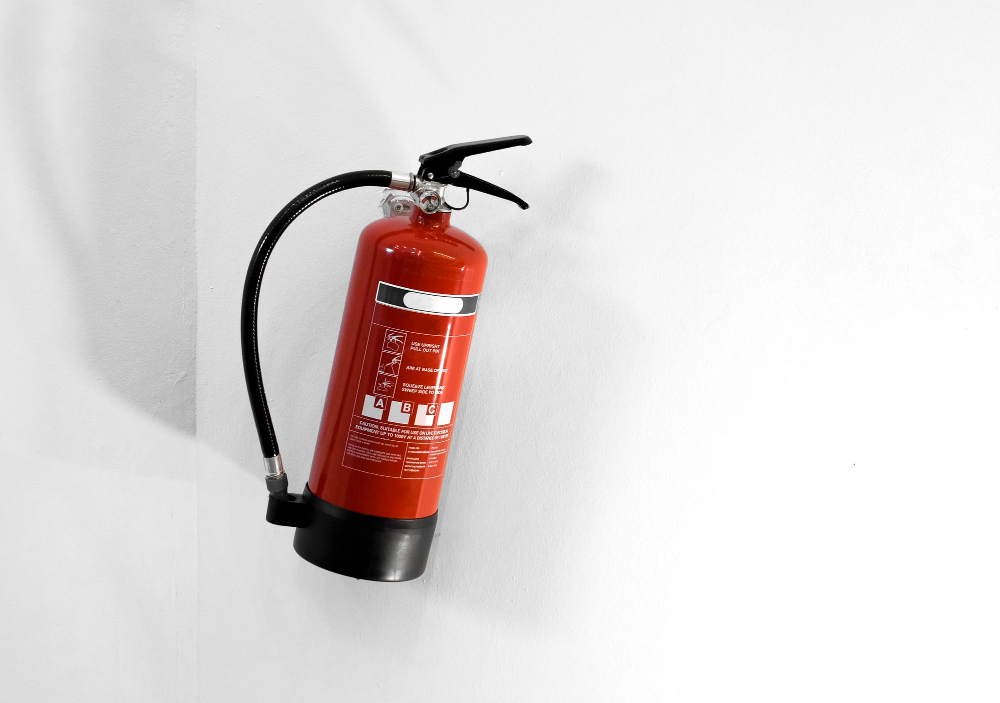In our bustling modern world, where the lines between work and home life often blur, ensuring safety in the office has never been more critical. We’ve all heard the phrase, “safety first,” but do we really understand what it means in an office setting? Beyond ergonomic chairs and fire extinguishers, there’s a comprehensive world of safety equipment that every office should have. In this guide, we’ll explore the often-overlooked but essential safety equipment that can make your office a safer and more secure place to work.
Contents
Fire Extinguishers
Do not just make sure that you have the correct fire extinguishers for your environment but also that they are regularly inspected. There are companies in Texas that can inspect them for you. It is an important service because a fire extinguisher that is not working can endanger life or may mean that a fire ends up destroying more equipment than it might otherwise have done.
Fire Safety
First and foremost, make sure your office has a well-thought-out evacuation plan posted in multiple locations. This plan should detail escape routes, assembly points, and emergency contact information.
Additionally, smoke detectors and fire alarms are indispensable. Regularly check and maintain them to ensure they’re in working order. Smoke detectors save lives by detecting fires in their early stages, giving everyone more time to evacuate safely.
First Aid Kits: The Unsung Heroes
First aid kits are like unsung heroes in the workplace. They’re often overlooked until a minor accident happens. But having a well-stocked first aid kit can make a world of difference in the event of a small injury or accident.
A standard first aid kit should include bandages, antiseptic wipes, adhesive tape, scissors, tweezers, disposable gloves, and pain relievers. Regularly inspect and replenish the contents to ensure it’s always ready for use.
Emergency Lighting: Shedding Light on Safety
In case of a power outage or other emergencies, having reliable emergency lighting is crucial. Emergency exit signs, backup lighting systems, and even flashlight stations can guide employees safely out of the office when the main lights fail.
Test these systems regularly to ensure they function correctly, as they can be a lifesaver when you need them most.
Personal Protective Equipment (PPE): Tailored Safety
PPE is not just for construction sites and laboratories; it also has its place in the office. Depending on your industry and specific office environment, PPE might include safety glasses, ear protection, or even respiratory masks for dealing with dust or chemicals.
Make sure that employees are informed about the appropriate PPE for their tasks and that it is readily available when needed.
Ergonomic Furniture: Comfort Meets Safety
A poorly designed chair or desk can lead to back pain, muscle strain, and poor posture. Ergonomic furniture is often associated with comfort, but it also plays a critical safety role.
Invest in quality ergonomic chairs, adjustable desks, and accessories like monitor stands and keyboard trays to create a workspace that promotes both comfort and safety.
Security Systems: Protecting Your Assets
Security systems are not just about keeping out unauthorized personnel; they also contribute to a safer workplace. Access control systems, surveillance cameras, and alarms can deter potential threats and provide evidence in case of incidents.
Consider the unique security needs of your office and invest in the appropriate systems to enhance safety and peace of mind.
Electrical Safety: Shocking but Vital
Electrical hazards are a real concern in offices. Faulty wiring, overloaded outlets, and outdated electrical systems can lead to fires and injuries. Regular electrical inspections and maintenance are essential to keep your office safe.
Encourage employees to report any flickering lights, sparking outlets, or exposed wiring immediately, and address these issues promptly.
Hazardous Materials Handling: Knowing the Risks
Even seemingly innocuous office supplies can pose risks if mishandled. Be sure to provide proper training on the handling and storage of hazardous materials, including cleaning supplies, printer toners, and batteries.
Additionally, clearly label hazardous materials and store them in designated areas to minimize the risk of accidents.
Safety Signage: Communication is Key
Proper signage can make a significant difference in maintaining a safe workplace. Label emergency exits, fire extinguisher locations, and hazardous areas clearly. Use color coding and symbols to make information easily understandable to all employees, including those who may not speak the same language.
Training and Education: Empowering Your Team
Safety equipment is useless if your employees don’t know how to use it. Regular safety training sessions and drills can teach your employees how to respond to emergencies and use safety equipment safely.
Encourage employees to ask questions and stay informed about safety protocols and procedures.
Conclusion
Ensuring a safe and secure office environment is a joint effort. By appropriately equipping with safety gear, providing ongoing training, and promoting a safety-oriented culture, you can establish a workplace where employees feel safeguarded. Keep in mind that it’s more than just fulfilling requirements; it’s prioritizing the welfare of your team and guaranteeing they return home unharmed each day. Therefore, outfit your office with necessary safety resources and make “safety first” not just a saying but a value that governs your workplace.



